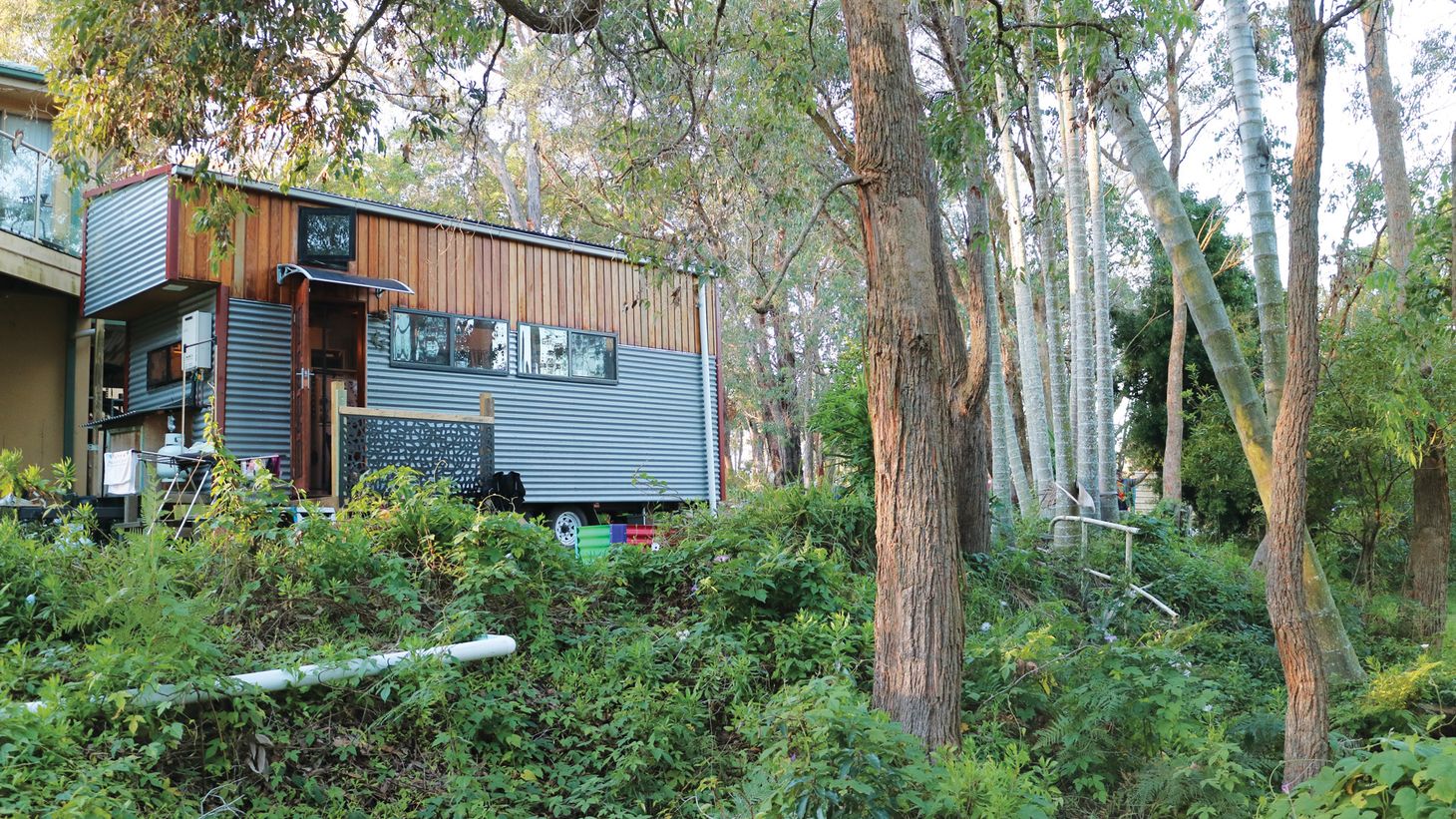Most people wouldn’t consider moving to a tiny house with kids, but Sarah Wooden did it with two children under four. Scroll to the end to see more photos of Sarah’s tiny house.
It was the wettest it had been in the Lake Macquarie area of New South Wales in months. Heavy rain had fallen for days, sometimes roaring like a waterfall. Mercifully, there had been a break in the weather for my interview with Sarah today, but as I make my way to her home, I find myself alternating between tiptoeing and skipping down the unsealed driveway, trying to avoid getting any mud on my pastel pink sneakers.
I round a corner and catch a glimpse of Dora Creek in the distance. I pause. My feet sink a centimetre into the mud, but potential mud stains don’t matter when you’re gazing at a body of water, birds skimming its surface. I breathe in the fresh air, smile to myself and make a mental note to return to this spot for a photo. For now, I’m running late.
Sarah’s story fascinated me when I first heard about it: A mother of two young children who moved into a tiny house with her husband. I have had an interest in the tiny house movement for some years now. People—usually individuals or couples—who for environmental, financial or some other reason, decide to squeeze into a residential structure of no more than 50 square metres (the average size of a new house built in Australia last year was around 200 square metres) and call it home. The idea of living in a tiny house appealed to me. The lifestyle is often associated with a self-sustaining, anti-consumerism ethos and I liked that. Then I had Elliott, and the idea of living in a tiny house with kids just seemed so impractical, I abandoned the idea altogether.
Then Sarah’s story came along.
The transition to living in a tiny house with kids
While living in a five-bedroom house (in Sarah’s words, “It was huge”) and raising a baby, Sarah and her husband, Jeremy, an electrician, decided they “wanted the ability to grow our own fresh food, have less expenses and commitments so we had more time and more freedom”. The solution, they concluded, was a tiny house on wheels. On wheels, because they wanted the “portability . . . to relocate it when the time came to buy our own land”. Sarah is quick to emphasise that what they wanted was a house they could move when needed and not something they could easily move around so they could see the country. “If we wanted to travel, I would renovate a bus,” she explains.

The “foundations” of their tiny house—a trailer—arrived on Boxing Day 2016 and they started work as owner-builders. Partway through, Sarah fell pregnant with Abigail, their second daughter. Complications with the pregnancy meant Jeremy was left to shoulder the construction alone, sometimes with help from family and friends. In late November the next year, the family of four moved in.
As I approach Sarah’s house, all I see is what looks like a caravan clad in corrugated iron and wood panels. There is a goat bleating loudly from somewhere in the far bushes and I can hear the faint chatter of a young girl determinedly explaining something to an adult male. I climb up the three steps to a landing that acts as the verandah for the tiny house, and find the front door swung wide open.
“Hello?” I call out as I see a kitchen bench with what looks like a full-sized oven underneath, all basking in the warm glow of three industrial-chic pendant lights. This definitely does not feel like a caravan, I thought.

What it’s like living in a tiny house with kids
Sarah, looking fresh and dressed in a simple black top and cream cardigan, appears at the doorway and cheerfully welcomes me into her home. It is a strange sensation walking into the tiny house. On the one hand, I am struck by the somewhat oppressive knowledge that this tiny 25-square-metre (including the two loft sleeping areas) one-room construction contains everything you would expect from a “normal” home 10 times its size. But on the other, the natural light flooding in, the high ceilings and the open plan give it a sense of cosiness and warmth.
As Sarah says, “We love the closeness and the togetherness [our tiny house brings. There is] less stuff, less clutter. It feels more spacious in here to me and it feels cleaner than the house we were in before.”
Sitting on their living room couch, which can double as two single guest beds and houses the children’s toys and clothes underneath, I ask Sarah if moving into the tiny house with kids has brought her the time and freedom she wanted. She nods vigorously.
“I spend a lot less time cleaning, there’s a lot less laundry to do, a lot less dishes to do. We just don’t have the same amount of stuff to get dirty,” she says. “The house does get messy. But I had some friends watch the girls yesterday and I had time to sit down, have some lunch and clean the whole house, including sweeping and mopping. There was no way I would have got a normal-sized house clean to that extent in four hours.
“And because there’s not as much stuff to tidy up, if there are four dishes left in the sink, it doesn’t bother me. We can still go out and play and do other things. We go on a lot more excursions or we go see friends a lot more often. We’ve got more time to see the museum or art gallery and do things that we didn’t used to do before.”
Watch the video tour of Sarah’s tiny house below
A family connection improvement
Watching Sarah as she tells me about her life, you can tell she feels a sense of liberation from moving into, paradoxically, a smaller, seemingly more enclosed space. But when you understand it’s a release from the responsibility of keeping up with household chores and the weight of all the stuff that used to surround her, you begin to realise her freedom comes from having less.
“I was cleaning all day, every day and I could never keep up,” she says. “You know when you walk into a room, you can almost feel the weight of the room on you. It’s not dirty, it’s just heavy. There’s just stuff everywhere. Even if I did clean, I never felt that I’d actually cleaned because there was just that clutter everywhere.”
In trying to keep up, Sarah could foresee the family relationship disintegrating. Even when she spent time with her daughters, the mental toll of needing to clean drained the emotional energy required to invest in them. She wasn’t really connecting with her husband either as even though they were under the same roof, they were often in different parts of the house. Either that, or they would be together, but not communicating.
In the video below, our mums discuss what they think about living in a tiny house with kids.
“We tended to fall in front of the TV a lot because we were tired, stressed and overwhelmed,” Sarah says. “It was easier to turn on the TV, eat dinner and forget about everything else for a while.
“We don’t need to do that now because we don’t go home and the space feels heavy. You don’t feel that weight. Sure Jeremy will come home and I’m all stressed because I’m trying to cook dinner or do something and the kids are there, but he’ll take them out and roll down the hill or play. They’re together, which is really different from before.”
And it’s that family togetherness that far outweighs any inconvenience that may occur from living in a tiny house with kids. Although, according to Sarah, there aren’t really any significant issues. Storage can sometimes be challenging (they do have a shipping container “that mostly serves the same role as a shed”, where they keep the tools they bought to build the house, her husband’s Army Reserve gear and camping equipment), and she misses a flushing toilet (they have a composting one) and her rocking chair, but she has no desire to move into a “normal” house just for those.
“We eat dinner together at the table every day, and we spend more time sitting and talking than we ever have before. There’s just a closeness of all being together,” Sarah says. “Lydia [now aged 3.5] knows where her Bible is and goes and gets it out. Just sitting on the couch and reading it is really special. We were so stressed before that it wasn’t something we did. We don’t do it all the time but we have a lot more time for it and it is a lot more natural to do such things now.”
Future plans
Their tiny house is currently sitting next to Jeremy’s parents’ house. A recent inheritance means Sarah and her family will be moving to an 8-hectare hobby farm near Ballarat at the end of the year to have a go at homesteading.
Sarah is also in the process of establishing herself as a mentor for others building their own tiny houses, helping them through their journey by sharing hers.
For the moment, however, I have the distinct feeling she’s simply enjoying her freedom and her daughters’ cuddles, which she admits have increased because they are spending more time together and she’s feeling less stressed.
More tiny house photos
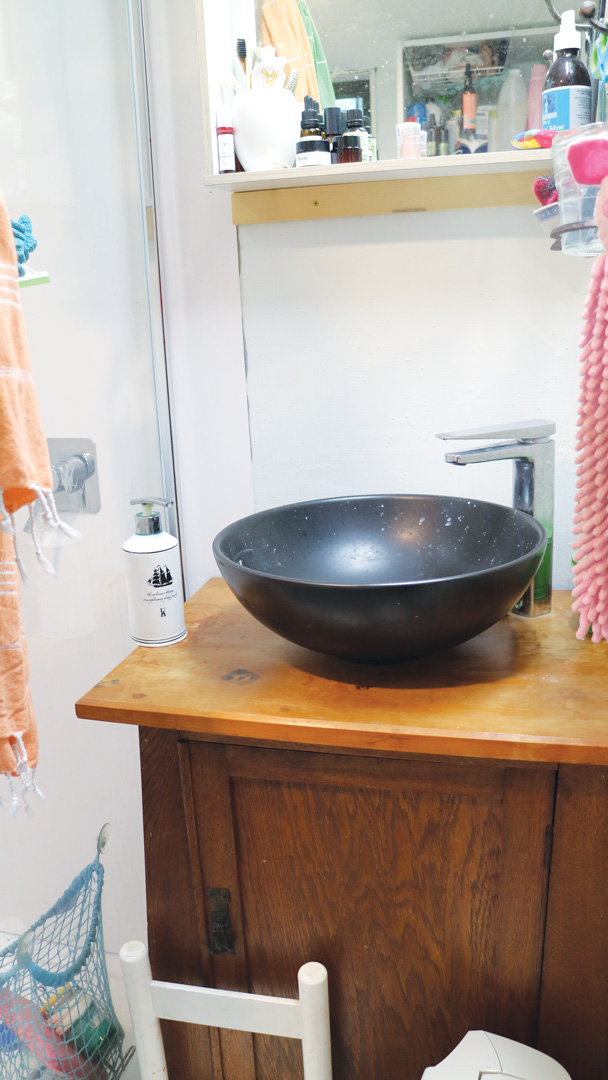
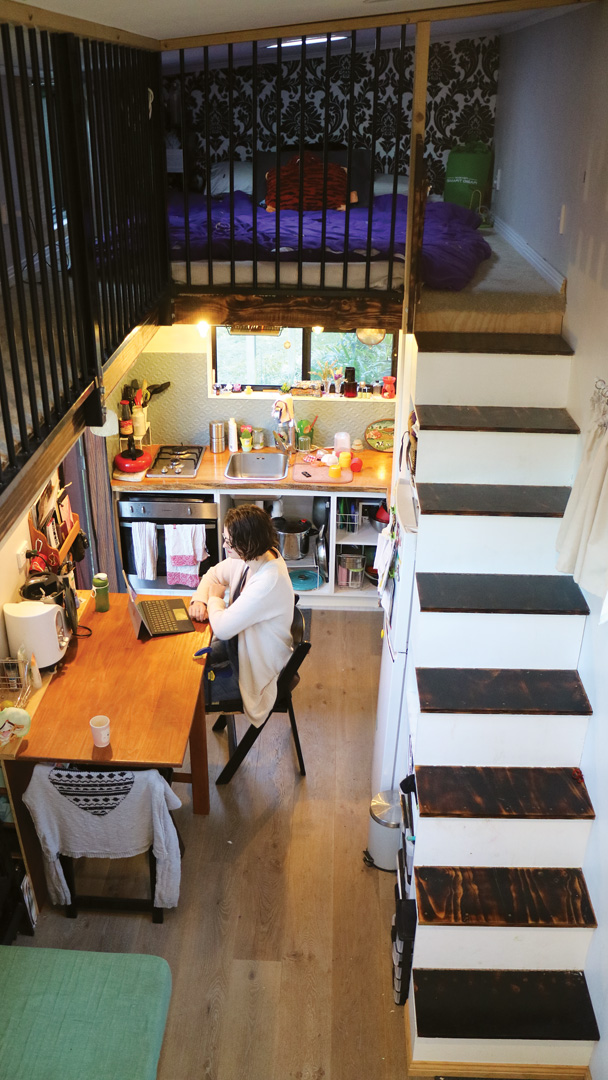
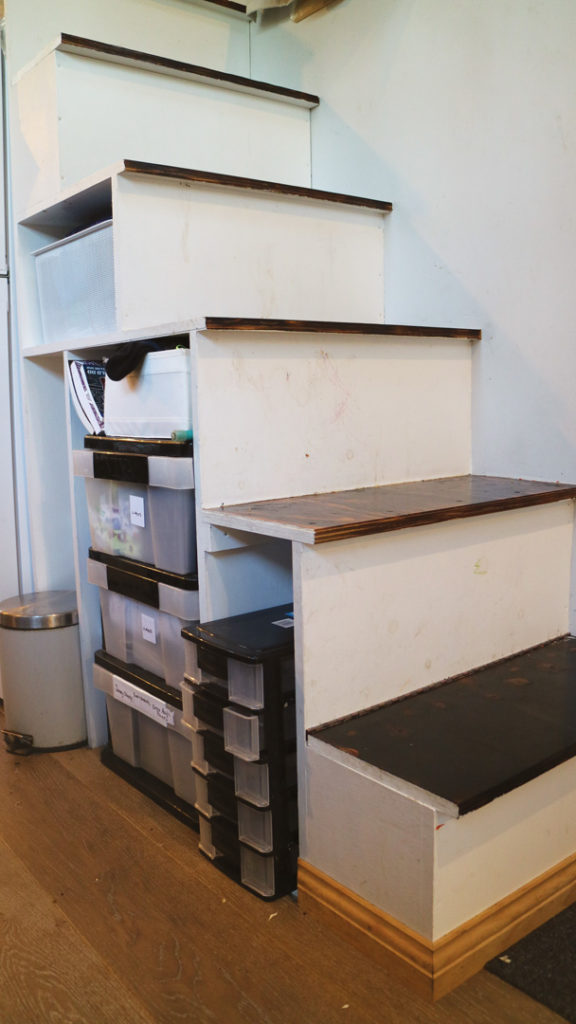
Tiny house storage. Jeremy’s wardrobe fits under the stairs in three drawers and the first step doubles as shoe storage for the family. 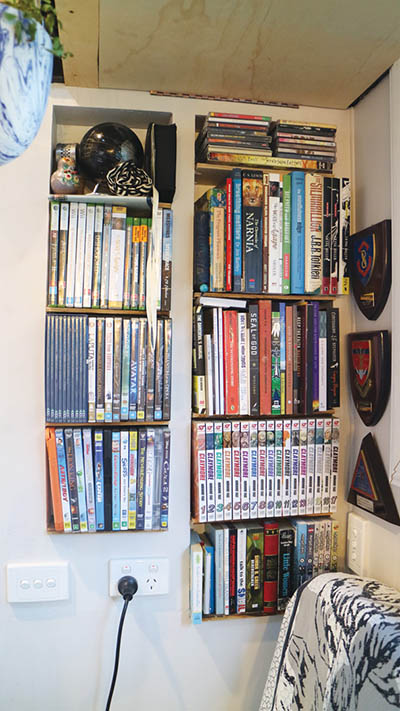
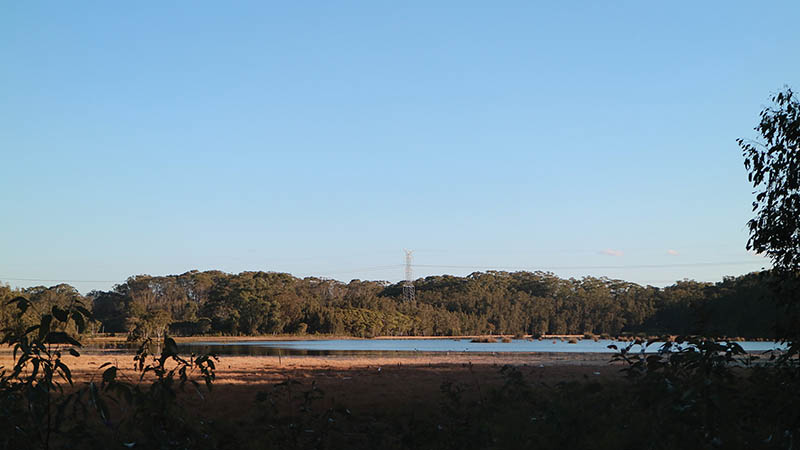
The view of Dora Creek from the driveway to Sarah’s home.
Free printable!
Simply living goals: How to live more with less
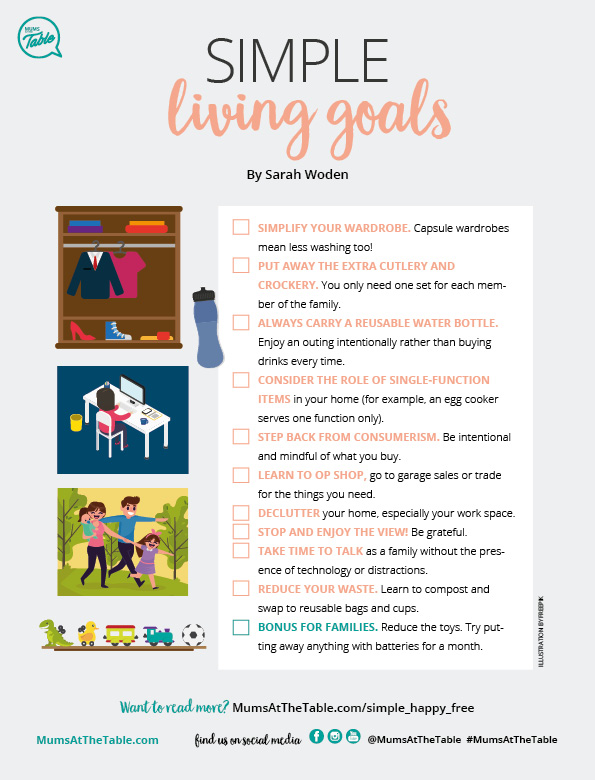
How helpful was this article?
Click on a star to rate it!
0 / 5. 0
Be the first to rate this post!

